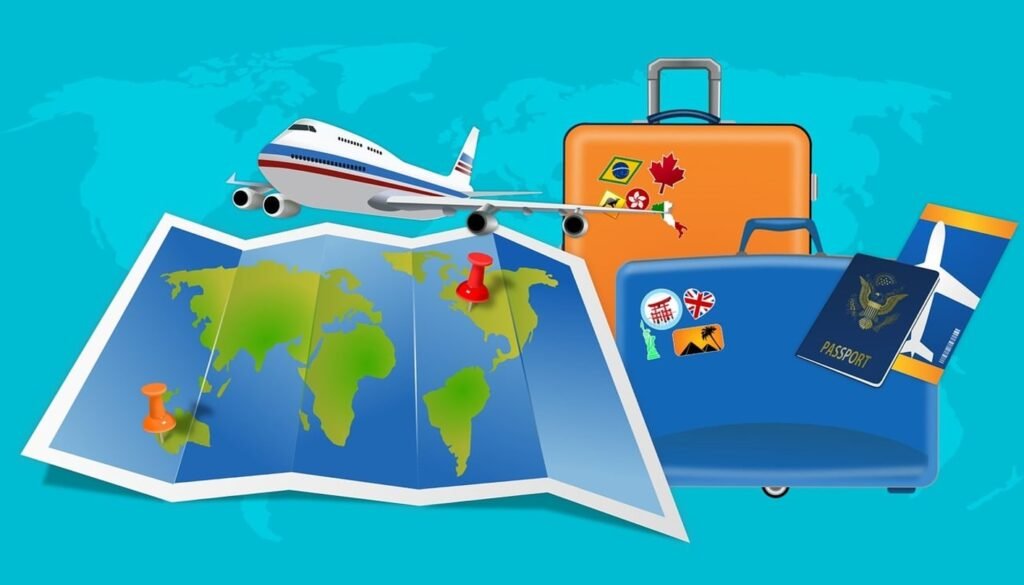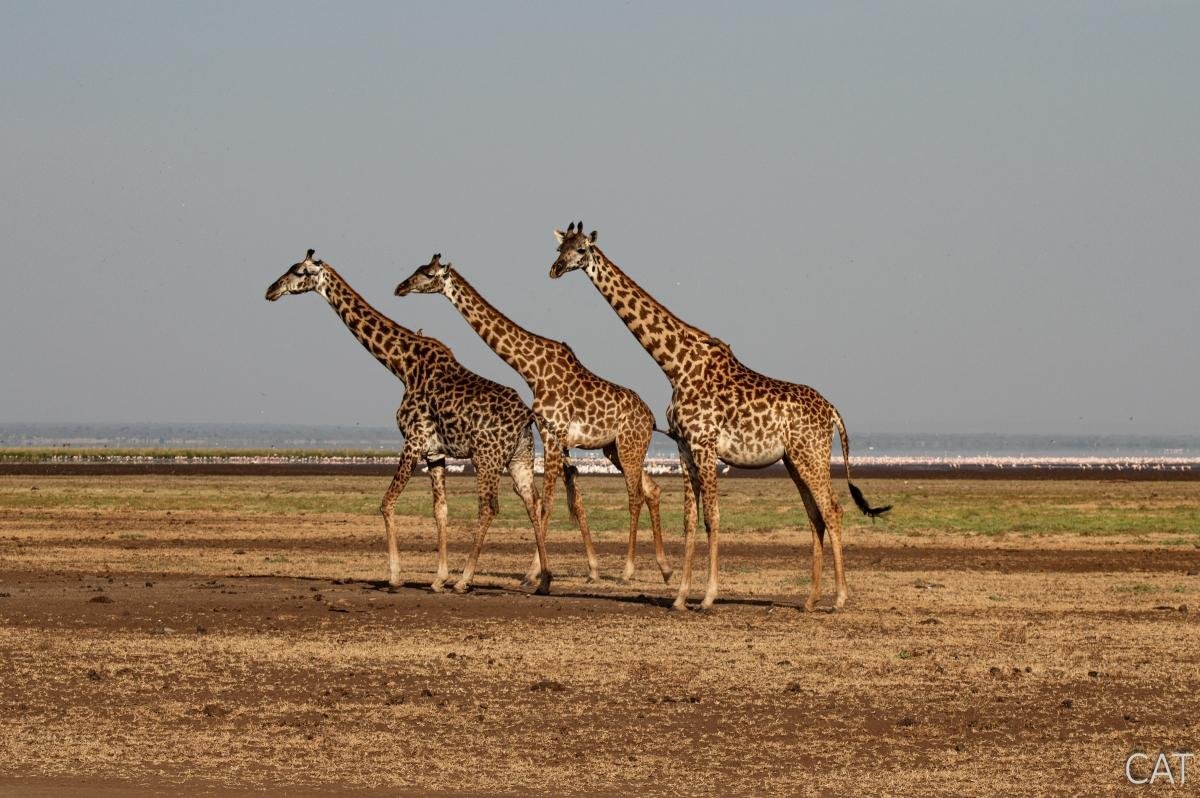Cooking up Amazing Trips contains affiliate links. If you purchase through these links, I may earn a commission at no extra cost to you. See my Disclosure Policy for more information. Thanks for supporting my blog!
Tanzania — Travel Information
Are you planning a trip to Tanzania and need practical details about this fantastic country? You’ve come to the right place because here, you’ll find all the travel information you need for your visit to Tanzania.
Get insights on Kenya’s location, climate, currency, languages, transportation options, and the best time to visit, among many other things that I include in this article.
Tanzania is an East African gem known for its incredible wildlife, iconic landmarks like Mount Kilimanjaro, and stunning beaches along the Indian Ocean. Whether you’re embarking on a safari in the Serengeti, visiting the historic island of Zanzibar, or climbing Africa’s highest peak, it’s vital to have essential travel information.

This guide contains all the essential information for an unforgettable trip to Tanzania.
I usually start my articles with general details about the place to visit and continue with the itinerary. However, on this occasion, as my trip encompasses two different countries, and to make it short, in this post, I will only give you practical information about Kenya.
Don’t miss my article, The Big 5, which explains the route through both countries (Kenya and Tanzania).
You can also read all the practical information about Kenya in Kenya – Travel Information.
Here is the list of everything you will find in this post:
A. Tanzania – General Information

Location

The United Republic of Tanzania is located in East Africa. It shares borders with Kenya and Uganda to the north, Zambia, Malawi and Mozambique to the south, Rwanda, Burundi and the Democratic Republic of the Congo to the west and the Indian Ocean to the east.
The country includes the islands of Zanzibar, Pemba and Mafia.
Since 1996, its capital is Dodoma, located in the centre of the country. Previously, it was Dar es Salaam, which is the largest city and commercial hub.
Area
Tanzania has a total area of 947,300 km2 (according to the United Nations), of which about 61,500 km2 are lakes, mainly Lake Tanganyika, Lake Victoria and Lake Malawi.
Stretching along the Indian Ocean, Tanzania’s coastline is 885 miles (1,424 km) of natural beauty, offering a glimpse of the country’s diverse and stunning landscapes.

The highest point in the country is Mount Kilimanjaro, at 5,895 m. It is also the highest mountain in Africa.
Population

The population of Tanzania in 2024 is estimated at 68.5 million inhabitants.
Demonym
Tanzanian.
B. Tanzania – Practical Information
Language

The official language of Tanzania is Swahili, which includes hundreds of local dialects.
The second official language is English, but it is most commonly used for business purposes.
Remember that you can check the language spoken in each country using the tables that I attach to my posts: Countries by Language and Best Time to Go.
Currency

The official currency in Tanzania is the Tanzanian Shilling (TZS). However, US dollars are widely accepted.
You will only find ATMs in the main towns, and sometimes they don’t even work, so I recommend carrying cash.
In my post Currency exchange, cards and cash abroad (Complete Guide), there is a table that allows you to see the currency used by entering the name of the country you are interested in. Additionally, this article provides all the essential information you need to know about money and travelling.
Plugs and Voltage

In Tanzania, the plugs you will find are:
- Type G (English). It has three flat pins arranged in an inverted T shape, with the top one being the ground connection.
- Type D (Indian). It has three round pins arranged in a triangle shape, with the ground pin being longer and thicker. It is compatible with the European one.
The voltage is 220 volts, and the frequency is 50 Hz.
Remember that you can refer to my post Plug Types by Country to find out about the different types of plugs used in each country and the corresponding voltage. This will help you determine if you need an adapter and the specific type required.
This information, along with everything else you might need to ensure your trip goes smoothly, is available in the Travel Logistics section.
Best time to visit Tanzania and How long you should stay
Best time to visit Tanzania

*️⃣ The climate in Tanzania is tropical, with slight variations between winter and summer. Like Kenya, it has only two seasons: dry season (June – October) and wet season (November – May).
It’s important to note that nighttime temperatures in Tanzania can drop significantly, even during the summer. For instance, at the edge of the Ngorongoro Crater (2,300 m above sea level), they can plummet to 5ºC. If you’re planning to climb Kilimanjaro, be prepared for even lower temperatures as you ascend, which can reach a bone-chilling -29ºC.
Thus, the best time to go on safari is between June and October because the parks are dry, the weather is sunny, and the animal life is excellent. In addition, this is when the Great Migration of wildebeest and zebra takes place.

Keep in mind that the Great Migration, while it generally occurs at a certain time, is not a guaranteed event due to its dependence on the rains.
If you want to pick a different travel destination based on the most suitable time to visit, see my posts Best Time to Go and Where to Travel Each Month. It will help you plan your trip better.
How long should you stay?

*️⃣ The number of days you should visit Tanzania, of course, depends on the places you want to see.
In my opinion, the perfect duration would be 5-6 days. But keep in mind that if you want to climb Kilimanjaro, you will need 5-7 more days.
The itinerary I followed included 6 and a half days in Kenya, which I combined with another 5 and a half days in Tanzania. You can find more details in my article The Big 5.
In my posts, How Many Days I Need to Visit Each Country and How Many Days I Need to Visit Each City, I explain the number of days needed to visit each country and the most tourist cities.
How to Get Around Tanzania

There are several options for getting around Tanzania, and the best one depends, as always, on what you’re looking for from your trip.
*️⃣ If you want to take a route through several national parks to see the animals, the best option is to book a safari.
Keep in mind that local agencies are much cheaper, and you will have plenty of options.

*️⃣ You can also rent a car with or without a driver, but remember that Tanzania has few paved roads, driving is on the left, and there is a possibility of encountering wildlife along the way.
If you are considering renting a car, I recommend reading my post, Car Rentals (Complete Guide), where I provide all the necessary information and tips to avoid any surprises.
🚗 Car Rentals: Explore Tanzania at your own pace by using Discover Cars or Auto Europe to compare reliable car rental providers.
Additional transport options for travelling between cities or within the same town include:
- Dala dala (minibuses or shared taxis). These are the most popular means of transport among locals and also the cheapest, but they are always crowded. This is NOT your option if you are claustrophobic.

- Bus. They are a regular and economical way to travel around Tanzania and reach neighbouring countries.

- Taxi. It is wise to agree on the price beforehand to avoid being overcharged, but remember that negotiation is often necessary.
Travel Logistics

Remember to take a look at the Travel Logistics section, where I will detail all the necessary preparations for your trip to Kenya.
There, you will find helpful information such as the documentation you will need, health and vaccinations, communications, travel insurance, and much more.
C. Tanzania – Cultural Data
Flag

The flag of the United Republic of Tanzania was adopted in 1964 and is the result of the union of the flags of Zanzibar and Tanganyika.
It features a black diagonal stripe representing Swahili culture, with thinner yellow edges due to the country’s mining presence.
The upper left triangle is green, symbolising its natural and vegetal wealth, and the lower right triangle is blue, representing its lakes and the Indian Ocean.
Origins and Brief History of Tanzania

The country’s name comes from joining the names of the two states that united in 1964, Tanganyika and Zanzibar, and created the United Republic of Tanzania.
Below, I will provide a summary of Tanzania’s history:
- Early Human Settlements: Tanzania is home to some of the oldest human fossils, including those found at Olduvai Gorge, closely linked to the origin of human evolution.
- Bantu Migrations: Around 1000 BC, Bantu-speaking groups migrated to the region, bringing agriculture, blacksmithing, and establishing several communities in Tanzania.
- Swahili Coast and Arab Influence: In the 8th century, Arab traders settled along the Tanzanian coast, especially in Zanzibar, and established trade routes for gold, ivory, and enslaved people, leading to the rise of Swahili culture, a fusion of African and Arab influences.
- Portuguese and Omani Control: The Portuguese briefly controlled coastal areas in the 16th century before being driven out by Omani Arabs, who ruled Zanzibar and surrounding areas until the 19th century.
- German colonisation: In the late 19th century, Tanzania (then Tanganyika) became part of German East Africa, and the Germans established plantations and infrastructure.
- British rule: After World War I, Tanganyika came under British control as a League of Nations mandate, while Zanzibar remained under an Omani sultanate.
- Independence (1961–1963): Tanganyika gained independence from Britain in 1961, followed by Zanzibar in 1963. In 1964, the two merged to form the United Republic of Tanzania under President Julius Nyerere.
- Post-independence and Ujamaa policy: Julius Nyerere introduced the socialist Ujamaa policy, which promoted rural development and collective farming and shaped Tanzania’s economic and social structure after colonisation.
- Contemporary era: After Nyerere, Tanzania transitioned to a more market-based economy while maintaining stability and becoming known for its natural beauty, including Mount Kilimanjaro, the Serengeti, and Zanzibar.
Interesting Facts about Tanzania

- The Ngorongoro Conservation Area hosts the largest volcanic crater in the world.

- It is home to Africa’s highest mountain, Kilimanjaro, at 5,895 metres above sea level.

- Tanzania is the only country in the world where you can find tree-climbing lions.

- Freddie Mercury, the lead singer and songwriter of Queen, was born in Zanzibar, Tanzania.

- The country is abundant in the Mpingo tree, also known as the “black tree.” The wood from this tree is one of the most expensive in the world and is frequently used to make musical instruments because of its hardness and durability.

- Here, people have a different rhythm, and if they see you getting stressed, they will say the famous “Hakuna matata“, which in Swahili means “no problem”.

- It is one of the most famous safari destinations in the world.
Now that you know the general information about the country, don’t miss my article, The Big 5. In it, you will find the route through both countries (Kenya and Tanzania) to photograph their majestic animals.
You can also read all the practical information about Kenya in Kenya – Travel Information.
I hope you enjoyed this article.
Travel Kit
To help you organise your adventure, I’ve gathered the best tools I use and recommend for booking flights, hotels, local transport and more. These links support this site at no extra cost to you.
- ✈️ Flights: Compare the best prices on flights using Kayak.
- 🛏️ Accommodation: Find hotels and unique stays at great prices worldwide with Booking.com.
- 🚐 Transfers: Pre-book your airport or city transfers to avoid stress on arrival with Welcome Pickups.
- 🚗 Car Rentals: Explore destinations at your own pace by using Discover Cars or Auto Europe to compare reliable car rental providers.
- 💺Transport (Bus and Train Tickets): Compare schedules and easily book intercity bus and train travel with Omio.
- 📷 Tours & Activities: Book fun experiences, guided tours, and skip-the-line tickets in advance with GetYourGuide or Viator.
- 🌐 Internet Connection: Stay connected abroad with eSIMS from Airalo.
Safe travels! 🌏✈️
Additional Information
You can also check my itineraries in Itineraries. Here, you’ll find them classified in City Guides and Country Guides.
Alternatively, in the section Destinations, they are classified based on the type of trip:
- Amazing Experiences. It covers the most extensive and complete trips.
- Beach and Sea. For those who prefer quieter activities by the sea.
- City Breaks. Short trips with a single destination.
📌 If you prefer to see them separated by continents, check them in Portfolios.
Remember to check the Cook up Your Trip. There, you will find everything you need to organise your trip from start to finish.
If you need any clarification, you can leave me a comment or fill out the contact form. I will be happy to help you.



